Written By Bobby. On Nov 11. In Design Process,Starting? Go here!
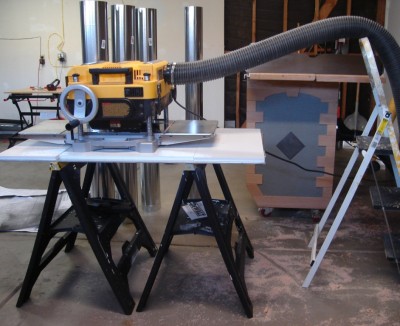
This worked for a while, but now I’m building an actual table with locking castors. The important thing is to have your shop functional so you can use it to build your ideal shop.
“That looks like crap!”, someone might say. “But it works…”, you say. That’s a valid point, I would say. But, I’d encourage you to consider it temporary, and design something truly awesome to both use and look at. Your shop should be pleasing to both you and your clients.
However, balance that with making your shop functional even if means temporary set-ups for tools. And use your experience with that set-up to make the next one much better.
On The Fly Upgrade
I have a planer, a benchtop planer, but it’s still heavy. I originally put it on melamine particle board over a 1/2″ thick aluminum plate, supported on plastic sawhorses (see above). The sawhorses weren’t happy. Sometimes they creeked and moaned, but I ignored the whiny little bastards. Then one day, Wham! A really loud clap scared the #%$^% out of me. I looked and saw my planer on the floor over flattened sawhorses splayed out like a gymnast. Aw crap, now I have to buy a new planer, I thought. Well, luckily, the soft sawhorses couldn’t support the planer but they cushioned its fall. The machine was perfectly ok, but now I had no support table.
I was thinking that I had to do a super-perfect new design for a planer table. But that would mean I’d have to use a floor-level planer for the next few months at least, and I had higher priorities for my shop. Screw the wait. I bought some birch plywood, 4×4’s and 2×4’s, let them acclimate for a few weeks, machined them square, drilled mortises and cut tenons, and soon I’ll have my new planer table complete with a handy middle shelf. Now, this table might be used in my shop for a year or so, but my woodshop design calls for a much cooler design, so it’ll eventually go. But I can repurpose it for another temporary table, or give it away for a new life as a plant stand or a mini-workbench for a friend.
Continuous Improvement
My current workbench is really just plywood and Douglas Fir lumber. But it works. Of course, I have my workbench design in progress (which I’ll chronicle on this blog). But right now I need a workbench. Remember, often times tools beget tools. So, I need these temporary things to build the more permanent things.
Another thing I’m learning is that what I think is the ultimate design now still won’t be permanent. There will be a router table 2.0. I didn’t want to think so at the time, but it’s almost always true. I wanted to think I’m building my final router table. But, the reality is that I know so much more now that I can design a much better one. And so I will. Actually I already am.
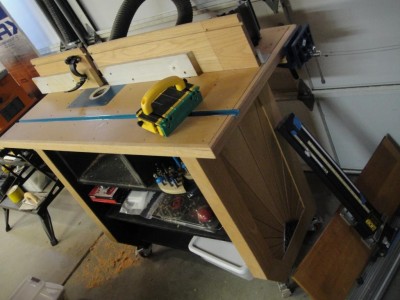
This was my first router table I built, and I thought it was my ultimate design. It works ok, but I’ve since come up with a lot of improvements that will make things much easier, such as a second router, reshaping the table, and a sliding and locking table.
It was worth it to build the best router table I could at the time, because I got many years of use out of it. But part of the fun to me is making the improvement over the old one. Think of it the way the military does…it builds “the ultimate warplane”, the F-15. Then, a few years down the road you have the F-15C, the F-15E, and then a decade or so later, the F-22. But each built upon the lessons learned, revised requirements, and retained all the prior good qualities for the most part.
Do the ultimate job of designing based on what you know your criteria are today, and of course leave room for growth. Then, Version 2.0 can be started as you learn lessons of what works and what doesn’t, and you can incorporate brilliant ideas you think of or see others do. It’s easy to say “Doh! I should’ve incorporated that!”, but just make note of it and pick it up in another iteration later.
WoodChip Tip: Sometimes I come up with an initial design for a shop improvement but don’t build it because I keep tweaking it. At some point, just build an inexpensive version of the design, use it for awhile, and then do Version 2.0 incorporating the actual real-life lessons learned in much nicer materials. In other words, design based on theory and practice combined.
What could use a total redesign in your shop?
Connect with me on Facebook, and follow me on Twitter for more ninja tips to Optimize Your Woodshop!
Gotta get more clamps,







 How I went from a cluttered and disorganized shop to a super-productive layout with a convenient dust collection and electrical set-up.
How I went from a cluttered and disorganized shop to a super-productive layout with a convenient dust collection and electrical set-up. 


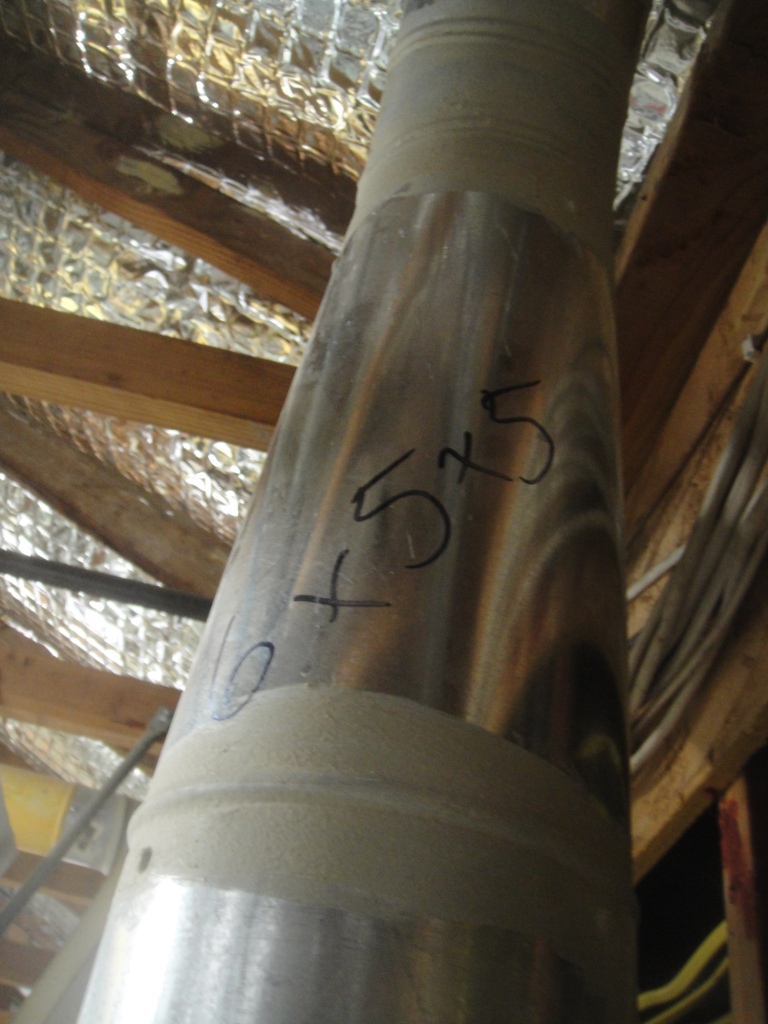
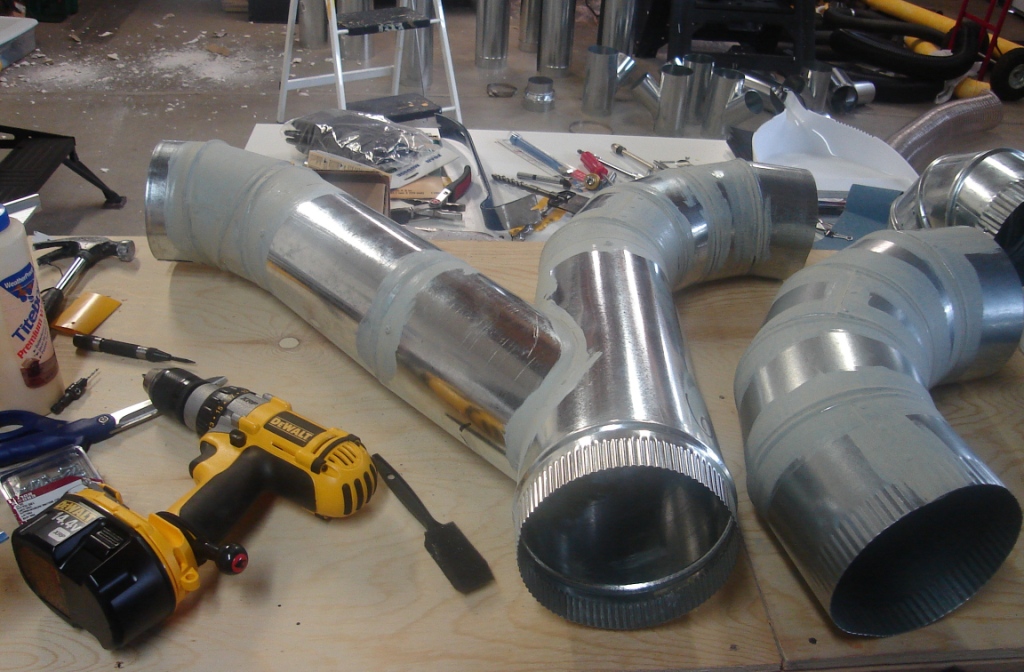
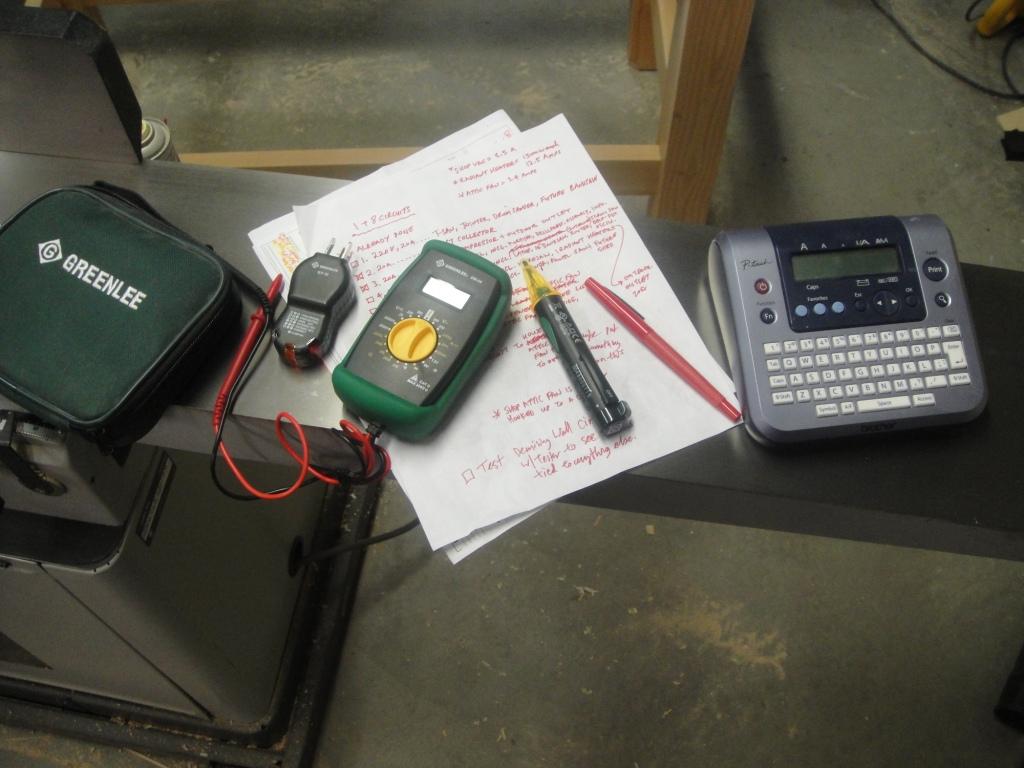




Inspirations, inspirations, inspirations…..
I am reading all this and feel like I found a soul mate.
I have a half of your huge basement as the workshop (20×30?). It is large but pretty useless as it stands. My largest obstacle is myself. I would like to move in the next few years (3-5) and do not want to build anything permanent, like dust collection, shop lights, etc, etc. We have agreed that when we move we will be positioning this area as the recreational room, so I can do whatever I want that will not require a lot of work to convert it to rec. room. So this is my excuse for not spending time on organization. Also I do not want to build something like a large work table that cannot be broken down to be taken out of the basement by one very narrow staircase with 2 landings ;). For now I try to incorporate mobility into every single fixture that I built – stands for lumber, pegboard stands, workbench, etc. It is kinda fun, but also a bit frustrating, knowing that there is nothing permanent. I find that I use that excuse for not doing 100% accurate job on fixtures and it drives me nuts.
I also feel like some of your “temporary” ideas can be transformed to the tools. I think about some tools as “test-drive” tools – I really wanted to try scroll saw, but could not justify spending 500 bucks on the nice one, so I have gotten the 100 dollar one. I had it for about a year and killed 2 of them (got them replaced by warranty). It was frustrating, but not as much frustrating as knowing that I have 500 dollar tool gathering dust. So finally, after I have realized that I spend 2-4 hours every week scrolling, I have got the 500 dollar Dewalt.
Great website BTW.
Cheers,
Oleg